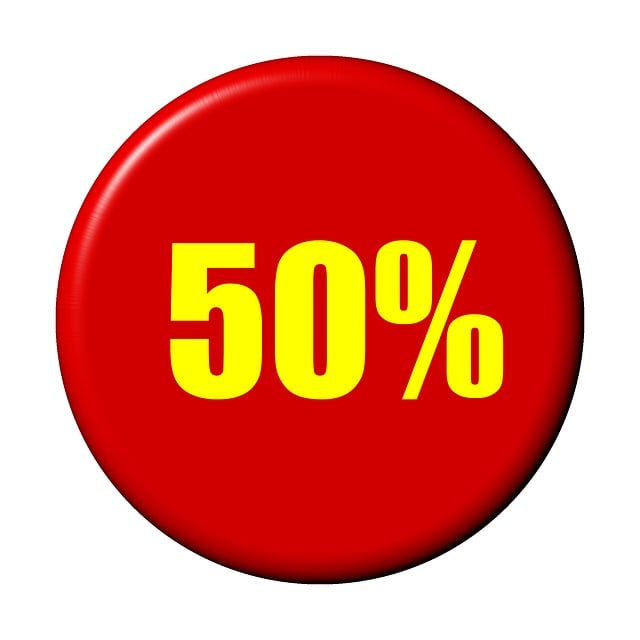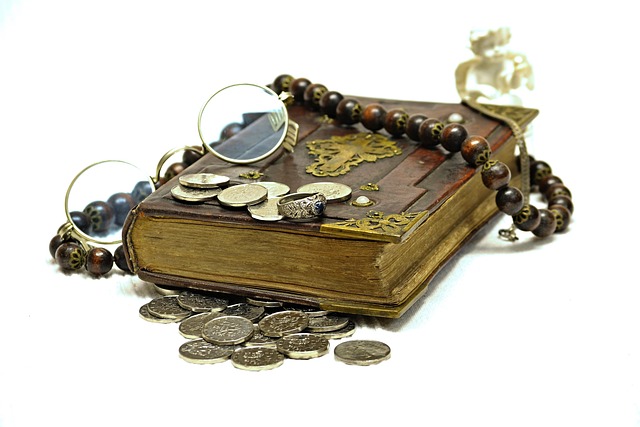Providing accurate translations for UK art catalogs and exhibition brochures requires a deep understanding of regional cultural differences and artistic expressions. Specialized translation services go beyond literal translation, incorporating local dialects, colloquialisms, and idioms to ensure meaningful connection with diverse audiences. This tailoring enhances the impact of promotional materials, making them accessible and relatable across the UK. By capturing specific artistic sentiments and preferences, these translations foster stronger community engagement and enrich visitor experiences, ultimately benefiting art institutions and enthusiasts alike.
In today’s global marketplace, effectively communicating through translation services is paramount, especially in a diverse region like the UK. When it comes to art catalogs and exhibition brochures, tailoring translations to regional preferences can significantly enhance engagement with local audiences. This article explores strategies for understanding and adapting content for specific UK markets, considering language nuances, cultural contexts, and successful case studies. Discover how professional translation services can transform UK art catalogs and exhibition brochures into captivating experiences that resonate across regions.
- Understanding Regional Preferences in the UK Market
- The Role of Language in Cultural Contexts
- Adapting Translations for Different Regions
- UK Art Catalogs: Capturing Local Audiences' Interest
- Exhibition Brochures: Effective Communication Strategies
- Cultural Nuances and Their Impact on Translation
- Case Studies: Successful Regionalized Translations
- Tools and Techniques for Accurate Adaptation
- Best Practices for Consistent Quality in Translation Services
Understanding Regional Preferences in the UK Market

When providing translation services for UK art catalogs and exhibition brochures, understanding regional preferences is paramount. The UK, with its diverse cultural landscape, encompasses various accents, dialects, and local idioms. For instance, a phrase that might be familiar to Londoners may not resonate as strongly in Scotland or Wales. Therefore, translators must go beyond literal interpretation and embrace cultural subtleties to ensure the translated content connects meaningfully with each region’s audience.
This involves delving into local art scenes, understanding regional artistic trends, and even incorporating relevant colloquialisms where appropriate. For example, a phrase used to describe an exhibition’s ambiance in one region might need to be adapted for another to convey a similar sentiment accurately. Such tailoring ensures that the UK art catalogs and brochures not only communicate effectively but also capture the essence of local artistic expressions, enhancing their overall impact on diverse audiences across the market.
The Role of Language in Cultural Contexts

Language plays a pivotal role in shaping cultural contexts, especially when it comes to art and artistic expression. In the UK, for instance, the nuances of language can greatly impact how art is perceived and appreciated. When translating UK art catalogs or exhibition brochures, understanding regional dialects and cultural references is essential. For example, a term that carries a specific meaning in one region might not hold the same weight or be entirely unfamiliar in another.
Accurate translation goes beyond simply converting words from one language to another; it involves conveying the intended message while respecting cultural boundaries. This is particularly crucial for art documents as they often include local references, artist biographies, and historical contexts that are integral to the overall experience of the reader. By tailoring translations to regional preferences, UK Art Catalogs and Exhibition Brochure Translation Services ensure that artistic narratives remain intact and resonate with diverse audiences across different parts of the country.
Adapting Translations for Different Regions

When it comes to translation services for UK art catalogs and exhibition brochures, understanding regional preferences is key. Different areas within the UK have distinct cultural nuances and language variations, which can significantly impact how information is received and interpreted. For instance, a phrase that resonates with art enthusiasts in London might not carry the same weight or meaning in Scotland or Wales. Therefore, translation services should not only focus on accurate word-for-word rendering but also aim to capture the essence of the local culture.
Adapting translations involves delving into regional dialects and idiomatic expressions to ensure the content resonates with the target audience. This might include using more familiar artistic references or adapting language to align with local art scenes. For example, a translation service specializing in UK art materials could incorporate terms that are commonly used in specific regions, making the catalog or brochure more relatable and accessible to readers across the country.
UK Art Catalogs: Capturing Local Audiences' Interest

When it comes to captivating local audiences in the UK, art catalogs and exhibition brochures play a pivotal role. These publications serve as a gateway for art enthusiasts to explore and engage with cultural offerings in their region. However, effectively reaching diverse UK audiences requires sensitive handling of language and cultural nuances. This is where professional translation services for UK art catalogs and exhibition brochures step in, ensuring that content resonates with readers across different areas.
Tailoring translations to regional preferences involves understanding local idiomatic expressions, colloquialisms, and artistic terminology. For instance, translating an exhibition brochure from English to Scottish Gaelic requires familiarity with both languages’ unique characteristics. Professional translators not only convey the literal meaning but also capture the essence of the art form, ensuring that UK art catalogs are accessible, engaging, and respectful of regional cultural identities. This level of localization fosters a deeper connection between art institutions and their audiences, enhancing the overall visitor experience.
Exhibition Brochures: Effective Communication Strategies

When creating exhibition brochures for a UK art show, understanding regional preferences is key to effective communication. Each area within the UK has its own unique cultural nuances and language variations that can significantly impact how information is received and interpreted. For instance, while standard English is universally understood, local idioms or phrases might be necessary to capture the attention of specific audiences. Professional translation services for art catalogs and exhibition brochures should therefore not only focus on literal word choices but also consider these subtle cultural aspects.
To ensure maximum impact, consider engaging translators who are native speakers of the target region’s dialect. They can help tailor the content to resonate with local art enthusiasts, collectors, or tourists. For example, using UK-specific terms for artistic movements or styles can create a stronger connection with the audience. Additionally, incorporating accessible language and clear visual elements alongside the translation will make the brochure more engaging and user-friendly, effectively communicating the exhibition’s essence to diverse visitors across the UK.
Cultural Nuances and Their Impact on Translation

When translating UK art catalogs or exhibition brochures, understanding cultural nuances is paramount. Art is a universal language, yet its expression varies greatly across regions. A phrase that resonates in one culture might not have the same effect in another. For instance, colors can carry different meanings—a warm hue admired in one country for its vibrancy may be seen as unappealing in another due to cultural associations. Similarly, idiomatic expressions and metaphors used in art discussions must be carefully translated to avoid confusion or misinterpretation.
Cultural context also dictates the level of formality and tone appropriate for such materials. An exhibition brochure designed for a UK audience might use a more playful, conversational tone to engage visitors, while a catalog targeted at an international market may require a more formal approach to convey professionalism and accessibility. Translation services specializing in art should be attuned to these subtleties, ensuring the translated content not only conveys the same meaning but also resonates with the target audience’s artistic sensibilities.
Case Studies: Successful Regionalized Translations

Successful regionalized translations can be seen in various industries, with art being a prime example. UK-based art catalogs and exhibition brochures often require precise and culturally sensitive translations to appeal to diverse audiences. For instance, a translation service specializing in this domain might adapt descriptions of renowned paintings to resonate with both British and international readers. They would employ terms and phrases that accurately reflect the artistic nuances, ensuring the message remains intact while appealing to local preferences.
One such case study involves a leading UK art gallery translating its catalog for distribution across Europe. By understanding regional art market dynamics, they tailored translations to highlight specific artists popular in each target country. This strategy not only increased sales but also fostered a deeper connection with international art enthusiasts. Similarly, exhibition brochures for museum shows have benefited from localized translations, attracting a broader audience and enhancing the overall visitor experience.
Tools and Techniques for Accurate Adaptation

When tailoring translations for regional preferences, especially for UK art catalogs and exhibition brochures, precision is key. Professional translation services leverage a combination of tools and techniques to ensure accuracy and cultural relevance. Automated translation software can provide a solid foundation by rendering text from one language to another. However, human translators are essential to refine the output, ensuring not just word-for-word equivalent but also preserving the original intent and tone.
These human experts consult with art historians, curators, and native speakers from the target region to capture nuances that might be lost in machine translation. This collaborative approach is particularly vital for UK art materials, where references to specific artistic movements, historical events, or even local jargon require a deep understanding of both the source and destination cultures. The result is a translated catalog or brochure that resonates with readers, effectively communicating the essence of UK art to a global audience.
Best Practices for Consistent Quality in Translation Services

Maintaining consistent quality in translation services, especially for specialized content like UK art catalogs and exhibition brochures, is paramount to ensuring clarity and cultural relevance. One best practice involves employing professional translators who are native speakers of the target language and have a deep understanding of regional nuances. This minimizes errors and ensures that the translated text resonates with local audiences.
Additionally, implementing rigorous quality assurance processes, including proofreading and editing, is crucial. Using translation memory tools can help maintain consistency in terminology across multiple projects, while client feedback loops enable continuous improvement. For UK art-related materials, staying abreast of local artistic trends, exhibition formats, and catalog conventions further enhances the accuracy and appeal of the translations, making them indispensable resources for galleries, artists, and collectors alike.
In catering to the diverse cultural landscape of the UK, tailoring translations for UK art catalogs and exhibition brochures is an art. By understanding regional preferences, leveraging language in its cultural context, and adopting effective strategies, translation services can significantly enhance engagement with local audiences. The case studies highlighted demonstrate that nuanced adaptations lead to successful connections between artists, their works, and viewers across different regions. As the demand for localized content grows, adhering to best practices ensures consistent quality in UK art catalog and exhibition brochure translations, ultimately enriching cultural experiences and fostering deeper appreciation for art throughout the UK.



